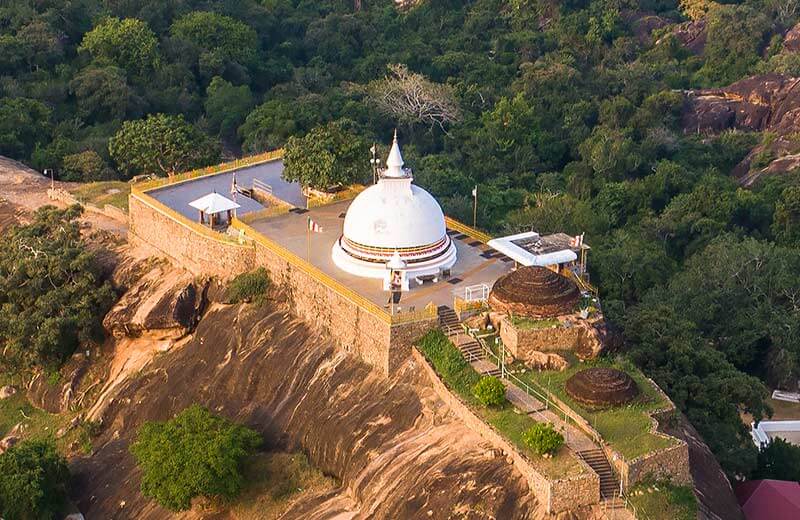Asgiri Maha Vihara pirivena
The Asgiri Maha Vihara Pirivena, located in the heart of Kandy, is a cornerstone of Sri Lanka’s rich Buddhist heritage…
View Details
Nestled amidst the remote and rugged landscapes of southern Sri Lanka, the Sithulpawwa Rock Temple stands as a testament to the island’s rich cultural and spiritual heritage. Perched atop a sheer rock outcrop, this ancient temple is a treasure trove of history, art, and religious significance. In this guide, we’ll embark on a journey to explore the mystical Sithulpawwa Rock Temple, uncover its hidden wonders, and provide practical tips for a memorable visit to this awe-inspiring cliff sanctuary.
Sithulpawwa, also known as Chiththala Pabbata, is a historic rock temple complex that holds a prominent place in the annals of Sri Lanka’s ancient history. Located within the Yala National Park in the southern province, it’s a testament to the island’s deep-rooted connection with Buddhism and its tradition of cave monasteries.
What makes Sithulpawwa truly remarkable is its dramatic setting. The temple is perched on a towering rock outcrop, offering breathtaking panoramic views of the surrounding wilderness. This unique location is an ode to the dedication and ingenuity of the ancient monks who sought solitude and spiritual enlightenment in these remote surroundings.
As you explore the caves and rock shelters of Sithulpawwa, you’ll encounter a fascinating array of ancient paintings and sculptures that provide a window into the island’s artistic and religious heritage. The walls of the caves are adorned with intricate frescoes, showcasing the artistic prowess of the monks who once resided here.
The temple complex is also home to a collection of ancient stupas and sculptures, each with its own story and significance. These artistic treasures serve as a living testament to the devotion and craftsmanship of the ancient artisans who contributed to the temple’s creation.
Sithulpawwa holds a special place in the hearts of Buddhists as it’s closely associated with the life of Lord Buddha. Legend has it that the site was once visited by Lord Buddha during his third visit to Sri Lanka, leaving behind the essence of his spiritual presence. The temple complex is still an active place of worship, attracting pilgrims and devotees from near and far.
One of the most revered relics in the temple is the sacred Bodhi tree, believed to be an offshoot of the Jaya Sri Maha Bodhi in Anuradhapura, one of the oldest living trees in the world. The presence of this sacred tree adds to the spiritual aura of Sithulpawwa and offers a unique opportunity for visitors to connect with the island’s religious heritage.
Before you embark on your journey to Sithulpawwa Rock Temple, consider these practical details:
Sithulpawwa Rock Temple is more than just an ancient site; it’s a spiritual sanctuary, an artistic treasure trove, and a place where the past converges with the present. Whether you’re drawn to the spiritual significance, the artistic marvels, or the allure of a cliffside sanctuary, Sithulpawwa promises an enriching and memorable experience in the heart of Sri Lanka’s cultural heritage.
Sithulpawwa is a place where history meets spirituality, where art merges with devotion, and where the heart finds solace amidst the natural beauty of the southern wilderness. It’s a destination that offers a glimpse into the island’s cultural and religious tapestry, where every step is a journey through time and tradition.